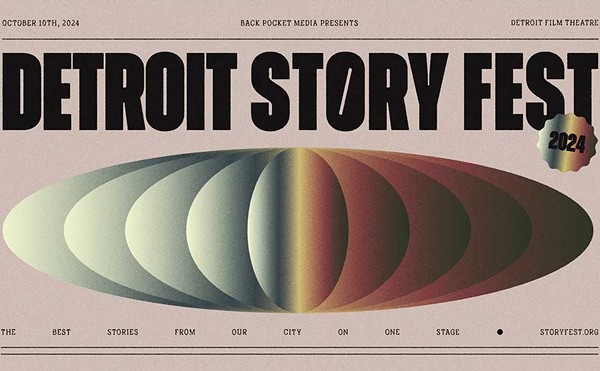Here’s the thing about the vehicles of our deliverance – stadiums and cars, I mean. Most of the time, they’re not being used for their intended purpose, which has consequences for the city that depends on both for its resurrection. The more the Motor City succeeds – this time around – the more irrelevant it becomes.
You look at an old photograph of Detroit, taken 80 or 100 years ago, even one taken as recently as the 1950s, and what you find is a city wholly preoccupied with itself. The built environment – offices, stores, churches, schools, parks – fills up the entire available space, because when it came to city life back then, demand exceeded supply. Now, things are just the reverse. There’s more space in Detroit than there is a demand for it, with the result that the city is a Swiss cheese of disappeared intentions – empty lots where human activities used to occur.
Which is good in one way, since the city since World War II is also a city of cars and commuters, where the suburban/exurban population (3.3 million) now exceeds the urban population (1 million) by more than 3-to-1. When people come to town these days, whether to work or to amuse themselves, they come, in their cars, for a temporary stay. Those cars have to be housed somewhere, since most of the time they’re not being driven; they’re just sitting there, empty, but needing space to park.
In that sense, the stadiums – Comerica Park and soon-to-be Ford Field – are the ultimate symbols of Detroit’s second-time civic culture, since they incarnate on a gigantic scale the empty politics of the cars that make them possible.
For instance, consider where the stadiums are located, right on Woodward, between the RenCen and New Center, at a spot people might once have considered the center of town – a spot, once, too valuable to be given up to sports, which was relegated to the edge of things. Not any more. The old, historic city is now peripheral to its own future, which is not based on some grand civic ideal, but on entertainment. (Casinos, with their always-open, hourly rate-motel model of merchandising, are a separate case, but also dependent on parking.)
The point this time around is not to actually be urban, but to entertain yourself touristically in a formerly urban space. To that end, Comerica Park couldn’t be better (or worse, depending on your point of view). To start, there’s the way it registers the empty politics of second-time city life. Compared to the old Tiger Stadium, this place is one big see-through tease, aside from being maybe the most gigantically ugly civic monument in Detroit’s history, but I’ll get to that.
The old park, at the edge of downtown, was opaque; it didn’t admit views into and through it. Not Comerica Park. Just like the cars that bring fans here, this place is easily seen into on the many days when it’s not being used, but just sitting there, empty, parked at the once-upon-a-time center of things.
Which makes the question of architecture unavoidable. Here it is, this gigantic thing, insinuating itself into the very center of the city. So how good is it? Unmistakably, Comerica Park is one big joke. I mean, who can take this seriously? The elevations – no matter which side you’re on – are a jumble of half-finished-looking structural elements and not-very-interesting colors. The palette seems right out of a public works handbook, circa 1945: dun-colored brick, dull green superstructure and fittings, concrete facings. Given that bland, utilitarian context, the intermittent Pewabic tiles look fake, as if no person in their right mind would squander expensive decorative elements on this kind of workmanlike pile.
And what’s the deal with the gigantic baseball bats held in place by guy wires? Is that some oblique comment on what the team doesn’t have, which is stick men? This gets old fast, like some sort of Claes Oldenburg bad joke (the sculptor who makes huge versions of commonplace things). But some people would say Oldenburg is a bad joke to start with, so where does that leave this place?
And then there are the big tiger sculptures out front, just in case the mentally challenged happen to get lost and think this is an actual civic space instead of a cartoon. No chance. You’re in Tiger Town now, all yucks all the time, right down (or up) to the cartoony gargoyles, each one a tiger with a baseball shoved in its mouth, like a gag.
There’s that line from Karl Marx, about history repeating itself, and how the first time around things end in tragedy, then the second time they come back as farce. Cities are like that too. The first time, they die hard. This one sure did. The second time, we’re ready for a joke, which Comerica Park unmistakably is.
But is it a bad joke or a good one? That probably depends on your sense of humor, and whether you maybe lost it, somewhere back in the past.
E-mail comments to [email protected]




